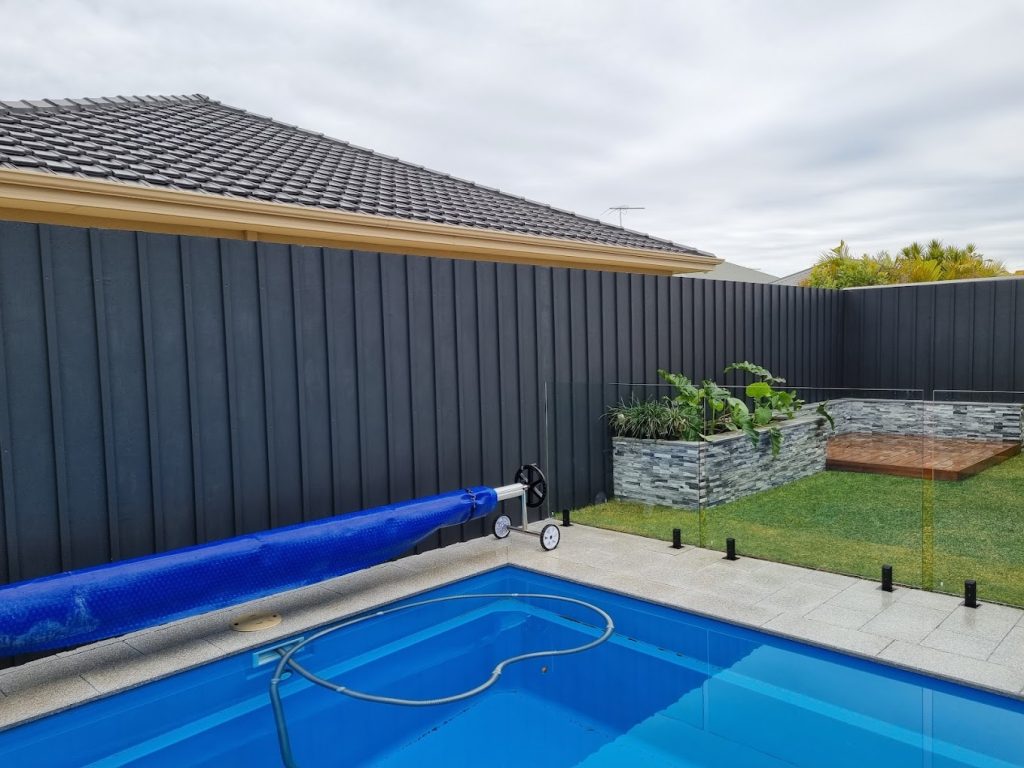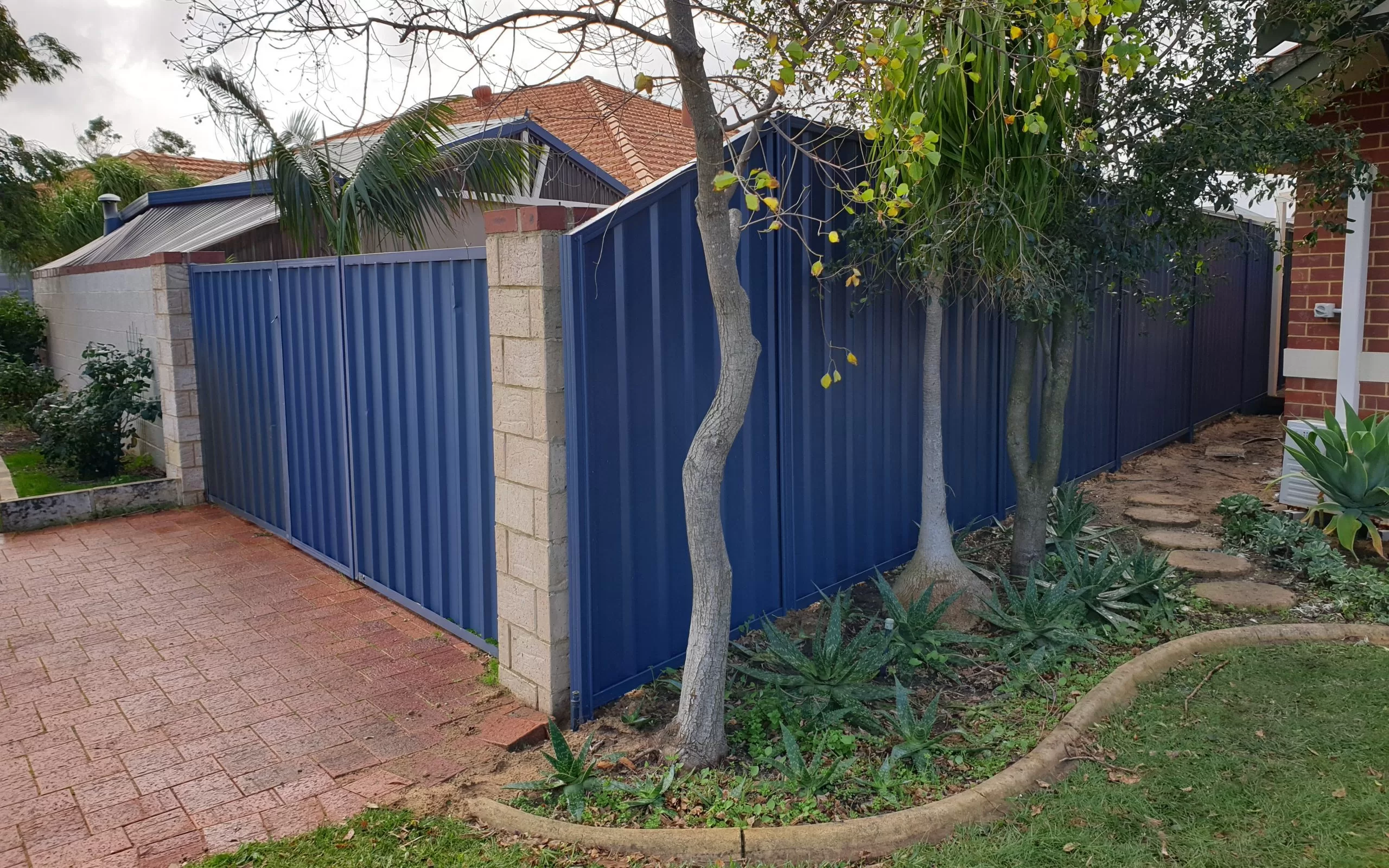
When it comes to choosing the perfect fence for your WA property, the debate between Colorbond vs. timber fences is always a hot topic in home improvement. Both options have their loyal followers, but which one is truly right for your property? Let’s dive into everything you need to know about these popular fencing choices in Perth and beyond.
Colorbond Versus Timber Fencing: Initial Costs and Long-term Value
“Is Colorbond fencing cheaper than timber?” While this common question may seem straightforward, it’s important to consider both the initial cost and the long-term value. Though Colorbond often requires a larger upfront investment compared to timber, it ultimately proves to be a more cost-effective choice over time. To truly compare the cost of a standard Colorbond fence versus a timber fence, a number of key factors need to be taken into account.
- Initial installation costs tend to be a little higher for timber fences vs. Colorbond. Prices to install timber can be a little more costly because there are all the individual palings to install versus the much wider, and therefore quicker to get in place, Colorbond panels.
- Timber requires regular maintenance, including painting or staining every 2-3 years, which adds to the overall lifetime cost of this fencing option.
- Colorbond’s durability means fewer repairs and replacements over time, typically making it much more cost-effective in the long run.

Durability & Maintenance
When comparing the durability of a Colorbond fence vs. timber, there are significant differences to keep in mind. For starters, Colorbond steel is engineered specifically for our harsh Australian weather conditions, so it doesn’t need a lot of post-installation care, while timber fencing requires more hands-on work to maintain its integrity over the years.
A quality timber fence can last 15-20 years with proper maintenance, while Colorbond fences often come with warranties of up to 10 years but can last well beyond that timeframe. Usually, Colorbond fencing lasts for between 20 to 30 years or more.
The maintenance requirements of a Colorbond fence vs. timber tell an important story, too:
Timber Maintenance Requirements:
- Regular inspection for rot, termites, and water damage.
- Periodic treatment with preservatives and anti-termite solutions.
- Repainting or re-staining every few years.
- Replacing damaged palings as needed.
Colorbond Maintenance Requirements:
- Occasional washing to remove dirt and debris.
- Checking for loose screws or fixtures every so often.
- No painting or treating is required.
- Minimal risk of pest damage.
Aesthetic Appeal & Design Options
The visual appeal of a timber fence vs. Colorbond one usually comes down to personal preference and your home’s architectural style. Timber offers a natural, classic look that many homeowners love, while Colorbond provides a sleek, modern appearance that never dates, with a range of colour options that suit all sorts of architectural and décor ranges.
Happily, one of the many benefits of Colorbond is that the panels come in a wide range of pre-coated colours for customers to choose from, which means that, unlike timber fencing, you don’t need to add painting to your to-do list to get the required shade for your fences (unless you’re after a very out-of-the-box hue!).
Here are some of the visual pluses of both timber and Colorbond fencing choices for you to consider:
Traditional Timber Fencing Enables Various Styles Including:
- Picket fencing.
- Post and rail designs.
- Horizontal slat configurations.
- Custom patterns and designs.
Colorbond Offers:
- A wide range of contemporary colours to match your home or commercial property.
- Consistent, uniform appearance.
- Clean lines and modern aesthetics.
- Fade-resistant finishes.

Environmental Considerations
In today’s environmentally-conscious world, sustainability is another important factor for most fence purchasers. Timber fencing can be an environmentally friendly choice when sourced from sustainable forests, but most of the palings used for fencing don’t come from these sources.
On the other hand, Colorbond is 100% recyclable and designed to be energy-efficient in its manufacturing process.
Installation & Construction
The installation process differs significantly between these fencing types. Colorbond installation typically requires professional expertise but can be completed pretty quickly because there are simple panels to erect rather than lots of individual palings.
Timber fence installation can be more time-consuming but might be suitable for DIY enthusiasts with the right skills.
Professional installation considerations include the following details:
- Timber fences require precise post placement and concrete footings.
- Colorbond panels need exact measurements and specialised tools.
- Both types require proper drainage planning.
- Council regulations may affect height and placement decisions for both types as well.
Weather Resistance
Living in Western Australia means dealing with extreme weather conditions. Colorbond has been specifically designed to handle our harsh climate, while timber usually requires additional protection:
Colorbond Offers:
- Excellent resistance to bushfire conditions.
- Strong wind resistance.
- UV protection built into the coating.
- Corrosion resistance perfect for coastal areas.
Timber Considerations:
- Can warp or crack in extreme heat.
- May rot in consistently wet conditions.
- Requires additional treatments for weather protection.
Which Fence is Best for Your Needs?
Both Colorbond and timber fencing have their place in Australian homes. While the Colorbond fence vs. timber fence price difference might initially favour timber, the long-term value proposition definitely tips toward Colorbond when considering maintenance and longevity.
Your final choice should reflect your budget, lifestyle, and personal preferences while considering the specific requirements of your property and local environment. If you’d like some help comparing Colorbond versus timber fencing for your home or want to explore other options, such as aluminium or another fencing type, please feel free to contact the SureFence WA team for more information. You can also get a free quote from our friendly team.
